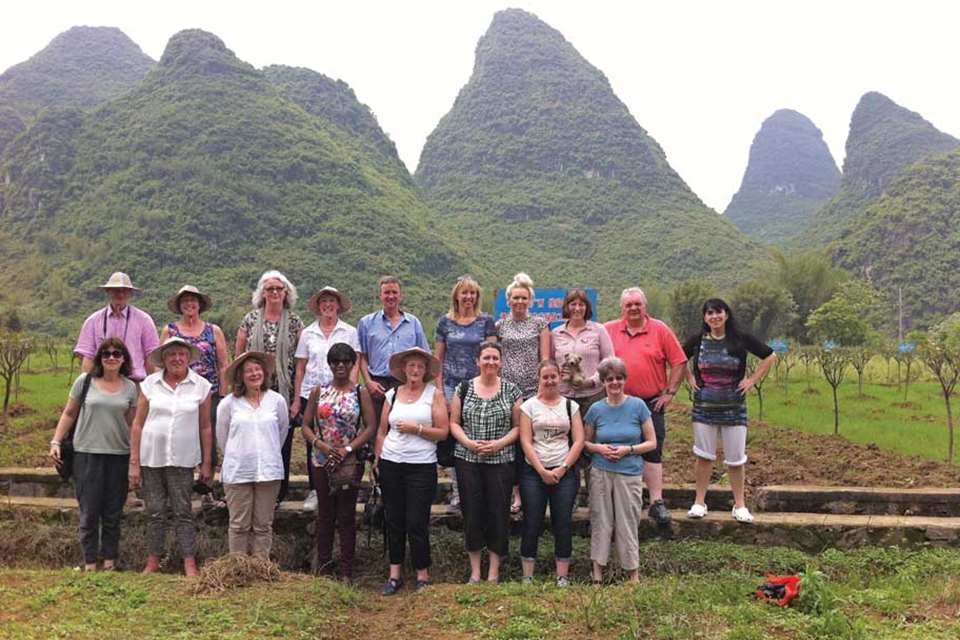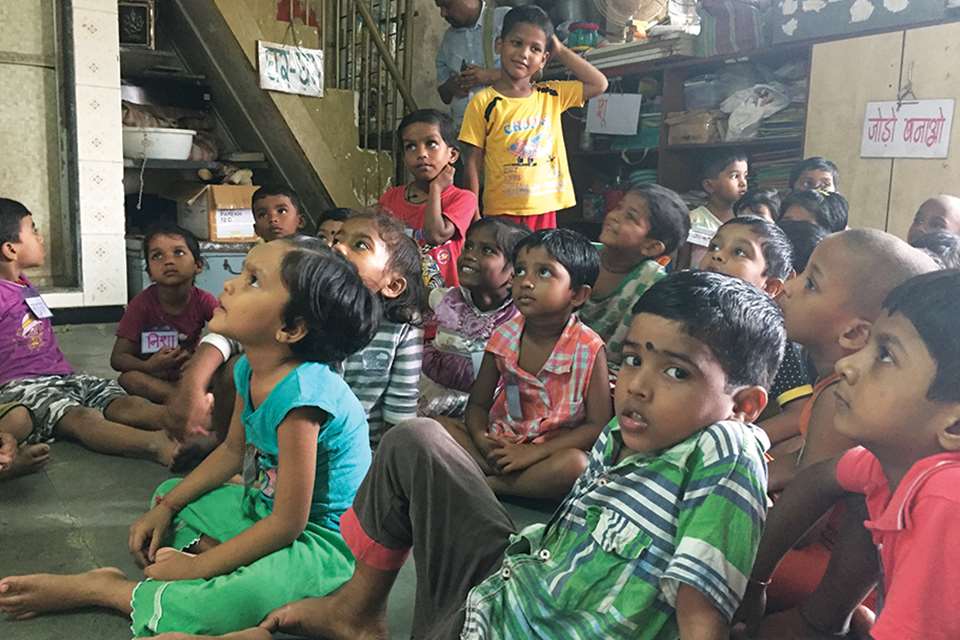A world of difference in India
Monday, October 23, 2017
Nursery World's Ruth Thomson reports from our trip to see early years education in India, from nurseries to Diwali celebrations
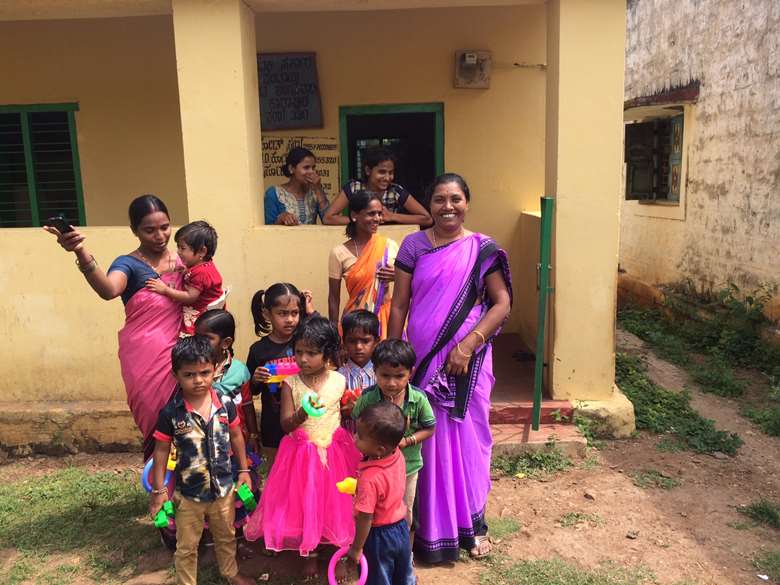
So far we’ve visited four fantastically varied early years settings in India, but common to all are families’ desire to give their children the best education they can, as well as motivated staff teams keen to do their best.
Our first visit was to a Podar Jumbo Kids nursery serving an affluent part of Mumbai. Podar sessional kindergarten and full daycare settings now number 320. They use the EYFS and cite the Reggio Emilia and High Scope approaches as other influences. The building is large and well equipped with computer games and a sensory room forming part of the provision.
Within a couple of hours of leaving Podar we had entered a different world – a Government primary school and nursery in a slum area and now run by NGO Young United Foundation. Here, founder Asif Sheikh is trying to place a greater emphasis on stories, creativity and sport in order to play to children’s strengths, empower girls and enable all children to continue their education. Three of the seven-year-old girls that we met are skilled wrestlers. After the visit we were able to visit the home of one of the school boys - a two-storey, two-room slum dwelling with each room little more than six feet square and home to a family of four.
From Mumbai we headed south to Mysore and here we visited Lawrence Montessori, a small nursery owned by lawyer and child psychologist Sophia Lawrence, who is also trained in the Montessori method. She says her nursery is popular with parents who want more for their children than the hours of continuous writing that often prevails in Government schools. She is also committed to inclusive practice. As well as welcoming a relatively high proportion of children with SEND into her nursery, she has also created provision for a class of older children all with SEND.
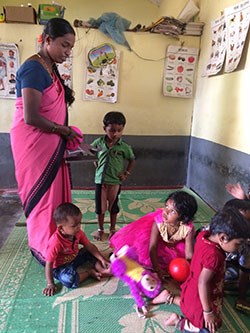 Our next visit was to an anganwadi – a Government nursery for three- to six-year-olds – in a village of 800 people within the Nagarhole National Park. This rural community welcomes the care and early education that one teacher and one assistant provide for the nursery’s 15 pupils, but resources are meagre and the single room that is the whole nursery is almost bare.
Our next visit was to an anganwadi – a Government nursery for three- to six-year-olds – in a village of 800 people within the Nagarhole National Park. This rural community welcomes the care and early education that one teacher and one assistant provide for the nursery’s 15 pupils, but resources are meagre and the single room that is the whole nursery is almost bare.
Here, the teacher follows a Government curriculum with its focus on literacy, numeracy and child health. The Government stipulates how many calories a child should have a day and nursery staff are expected to provide for the children a rotating number of healthy foods including an egg and milk. They are also responsible for recording each child’s height, weight and arm circumference. It was no coincidence that the most expensive resource in the nursery was a brand new digital weighing machine!
While parent and practitioner commitment to early education is palpable in all four settings, so too is a strong focus on numeracy and literacy, and highly formal methods of teaching them. Some settings are striving for a broader curriculum and some have adopted the ‘language of the early years’ but parents – and Government – are still keen to see evidence of children reading and counting from an early age. It will be interesting to see how policy and practice evolve in this fast-developing country of some 1.32 billion people.
Diwali celebrations
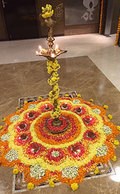 Our visit has coincided with Diwali, a celebration held mainly within the home so less visible than you might imagine – particularly now that the Government has clamped down on the use of firecrackers in an attempt to curb the pollution that they create.
Our visit has coincided with Diwali, a celebration held mainly within the home so less visible than you might imagine – particularly now that the Government has clamped down on the use of firecrackers in an attempt to curb the pollution that they create.
Nevertheless, we’ve been fortunate to see some of the celebrations. We enjoyed the lights and decorations in our hotels, saw some fireworks in Mysore and arrived just in time for a temple procession marking the festival. Wandering through Mysore market we saw huge baskets of Diwali clay lamps and stalls piled high with flowers for making garlands to decorate the home and for women to wear in their hair.
Best of all – and with perfect timing – we drove through a village just as people were running painted bullocks up the main road. Standing still they looked impressive, with some multicoloured and others dusted in the colours of the Indian national flag, but watching them charge up the road was an amazing sight – all the more incredible when they sometimes had to dodge traffic in both directions!
Driving in India is like a dance, with traffic weaving in and out according to a set of unwritten and seemingly instinctive rules, and never actually colliding. So, a road can go from two lanes to three or four and then back again, overtaking on corners happens all the time and on one occasion we swapped lanes completely with traffic on both sides driving in the wrong direction before returning to the right side of the road. The bullocks didn’t seem very clear about the ‘rules’ but animals and people all emerged unscathed!
- Find out about other Nursery World/Master Travel early years tours, including Finland and Sweden from 10-17 February 2018 and Peru from 27 May to 7 June 2018 at https://www.mastertravel.co.uk/collections/education-study-tours


